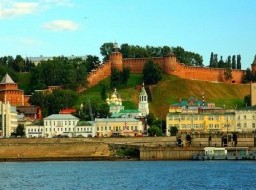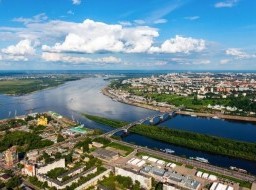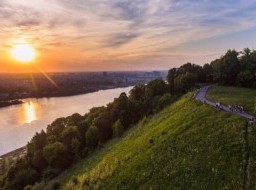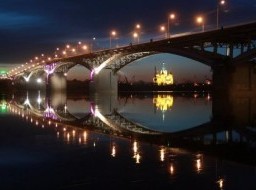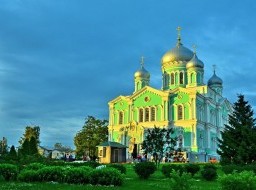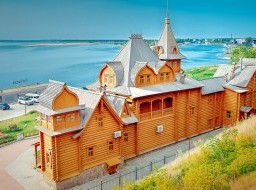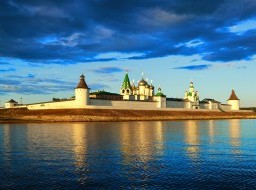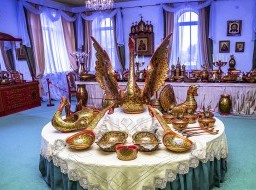Rozhdestvenskaya Street
Rozhdestvenskaya Street - a beautiful historic street in Nizhny Novgorod. Is a unique open-air museum, there are only stone houses, the history of the oldest of which dates back to the middle of the 18th century. Officially there are 35 monuments of architecture. The most famous landmark is the Church of the Nativity. History The settlement on the site of the modern Rozhdesvenskaya street began literally from the time the city was founded. It is known that in the 14th century, this territory was part of the border of wood-reinforced fortifications known as the Lesser Ostrog. The 17th century was a period of economic growth in the history of Nizhny Novgorod. At the beginning of the century, the street was called Kosmodemyanskaya by the church of Cosmas and Damian located in the center of the Lower Posad. But in 1653 a stone Christmas temple was built and the street was called Rozhdestvenskaya. This church was badly damaged by fires. In 1719, merchant Grigory Stroganov built next to her another stone church, which has survived until our time. This church is called in different ways. Stroganov - by the name of the merchant Stroganov or Nativity - by the name of the street. At the beginning of the 19th century, by order of the engineer Agustín de Betancourt, it was decided to build this part of the city with stone buildings, in order to avoid fires. And, in the course of implementing this decision, the street was straightened by the demolition of old buildings. Rozhdestvenskaya Street since 1816 has become closely associated with the trade fair. Rich merchants build hotels, profitable houses and banks. The street underwent a significant reconstruction in 1835–1839, when instead of the house known merchant Sofronov was created Sofronov Square, which became the cultural and business center of the Lower Bazaar (now Markin Square). At the exit of the street to the Oksky Pontoon Bridge warehouses were demolished and St. Alexius Square, named for the chapel in the name of St. Alexius the Metropolitan, was created. Now the square is called Blagoveshchenskaya (English: Annunciation (not to be confused with the former name of the Minin and Pozharsky Square)). The All-Russia Exhibition of 1896 changed the street. In the area of the Unity Square and the Pokhvalinsky descent, funiculars were built. Opposite the Oksky Pontoon Bridge, a power station appeared that provided the city with electricity. June 21, 1896 in Nizhny Novgorod was opened tramway. The line, 3.5 versts long (3.7 kilometers or 2.32 miles), passed from Skoba (Unity Square) to the bridge, connecting both funiculars. At the opening of the exhibition on Rozhdestvenskaya Street, the houses of the Blinov brothers' merchants (Blinovsky Passage) and the stock exchange were built. Both buildings adorn the current Markin Square. Attractions On the street were six temples. Starting from the Kremlin: |

